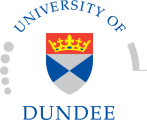| Ron Hay | ||||
 |
Email: r.t.hay@dundee.ac.uk Ron Hay was born and educated in Dundee and studied for a degree in Biochemistry at Heriot-Watt University, Edinburgh (1971-1975). He studied for his PhD at the Medical Research Council Virology Unit in Glasgow under the supervision of Dr John Hay working on replication of herpes simplex virus DNA (1975-1979). A Damon Runyon-Walter Winchell Cancer Fund postdoctoral fellowship award allowed him to work in the laboratory of Dr Mel DePamphilis at Harvard Medical School, Boston where he determined the location and structure of RNA primers that initiate DNA replication at the Simian Virus 40 origin of replication (1979-1982). Returning to the MRC Virology Unit he established his independent laboratory working on the initiation of adenovirus DNA replication (1982-1985). He then moved to the University of St. Andrews where he held Lecturer and Reader positions before taking up the Chair in Molecular Biology and became Deputy Director of the Centre for Biomolecular Sciences. In October 2005 he took up the Chair of Molecular Biology in the University of Dundee and is part of the Centre for Gene Regulation and Expression.
Ron is a Wellcome Trust Senior Investigator and a fellow of the Royal Society, the Royal Society of Edinburgh, the Academy of Medical Sciences, Academia Europaea and is a member of the European Molecular Biology Organisation. In 2012 Ron was awarded the Novartis Medal and Prize of the Biochemical Society. Selected Publications Seifert A, Schofield P, Barton GJ, Hay RT. (2015) Proteotoxic stress reprograms the chromatin landscape of SUMO modification. Science Signaling. 8(384):rs7. Branigan E, Plechanovová A, Jaffray EG, Naismith JH, Hay RT. (2015) Structural basis for the RING-catalyzed synthesis of K63-linked ubiquitin chains. Nature Structural and Molecular Biology. (8):597-602. Pelisch F, Sonneville R, Pourkarimi E, Agostinho A, Blow JJ, Gartner A, Hay RT. (2014) Dynamic SUMO modification regulates mitotic chromosome assembly and cell cycle progression in Caenorhabditis elegans. Nature Communications. 5:5485. Tammsalu T, Matic I, Jaffray EG, Ibrahim AF, Tatham MH, Hay RT. (2014) Proteome-wide identification of SUMO2 modification sites. Science Signaling.7(323):rs2. Plechanovovà A, Jaffray E, Tatham MH, Naismith JH, Hay RT. (2012) Structure of a RING E3 ligase and ubiquitin-loaded E2 primed for catalysis. Nature 489, 115-120
A full list of publications can be found here.
|
|||
©Berkeley Web Solutions |
Updated 16/11/12 |
|||








